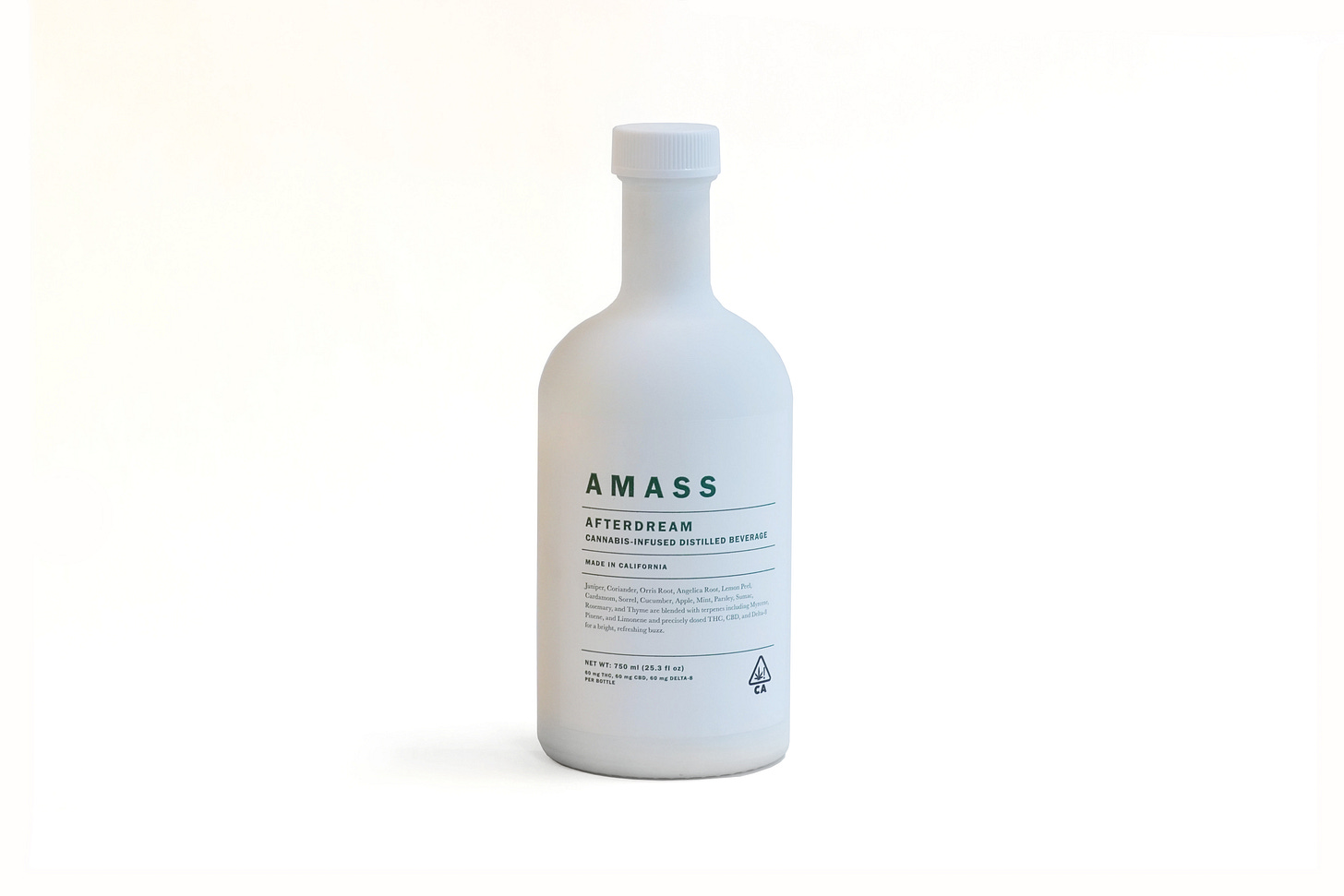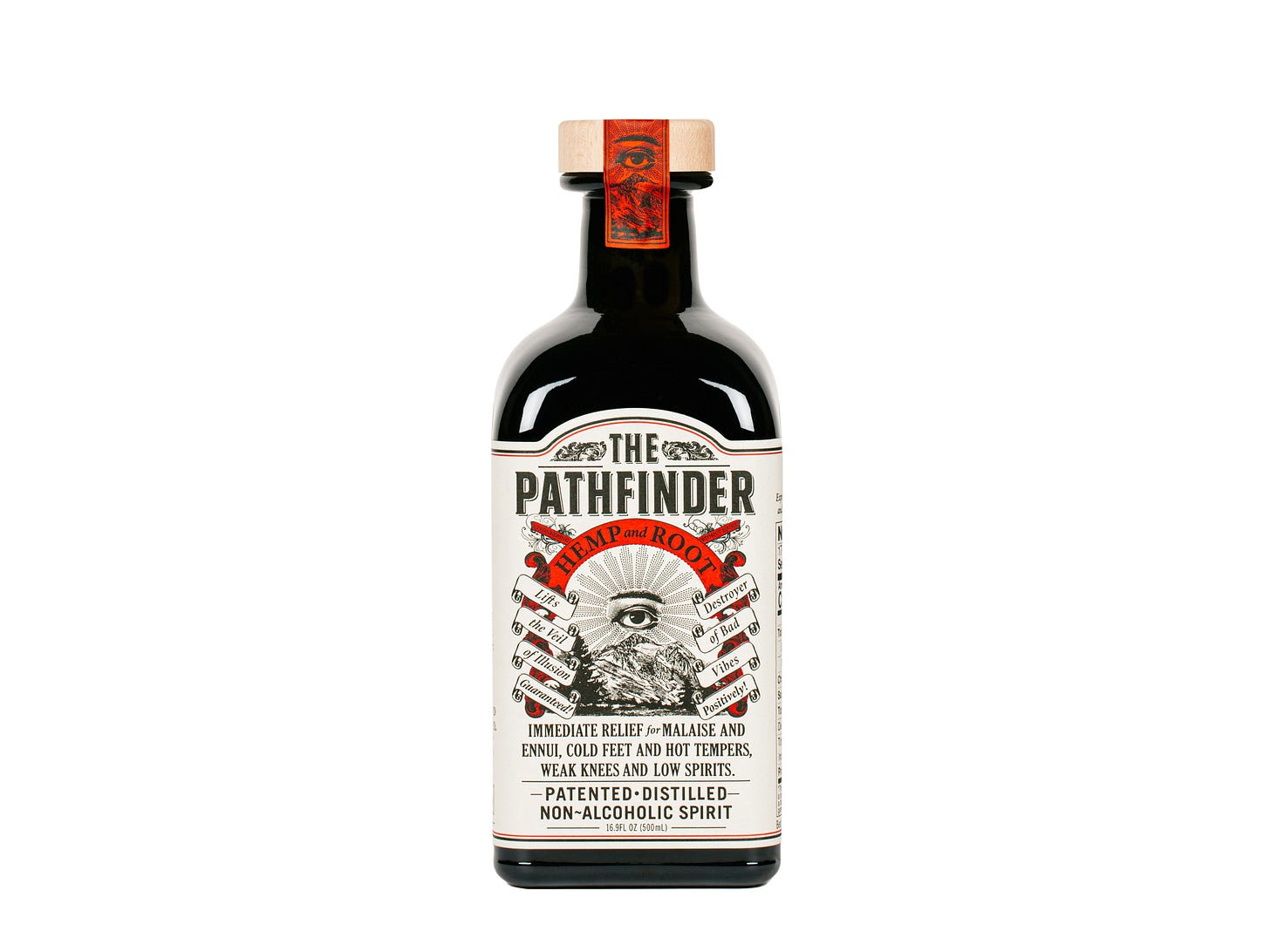It’s back to the grind after a long weekend for most of you. I hope you didn’t have the holiday-Monday scaries, but if you’re struggling at work today, maybe this letter will help you look forward to the next time you have to do absolutely nothing but chill. And chill, you will. (Promise me?)
Let’s talk about drinking weed, by which I mean drinks infused with tetrahydrocannabinol (THC), not just cannabidiol (CBD). I’ve written about cannabis beverages for Esquire, and you can gain some 101-level intel from my summer 2020 Instagram Live with Verena von Pfetten, co-founder of Gossamer, but the very basics are: Both CBD and THC are cannabinoids, chemical compounds of which there are over 100 in the cannabis plant, and both are psychoactive (i.e. they interact with your brain chemistry). THC is also intoxicating (i.e. your motor system might become impaired), which CBD is not. Most of the alcohol-free beverages on the below list contain both cannabinoids because there’s this idea that they work best in concert with each other, something the industry refers to as “the entourage effect.” Currently, you can only buy THC-infused beverages at dispensaries in states where non-medical cannabis use has been legalized. (According to the National Conference of State Legislatures, as of May 27, 2022, 19 states, two territories, and the District of Columbia have enacted measures to regulate cannabis for recreational use.) The reason why you can purchase beverages containing primarily or only CBD across the country is that they generally use CBD derived from hemp, and hemp-derived cannabinoids are federally legal. (Hemp and cannabis, by the way, are the same plant, but hemp contains much less THC. It makes up under 0.3 % of the entire plant.)
I debated getting deeper into the scientific and technological details (how the plant gets turned into something that can be infused into liquid, how that process has improved over the years, how our bodies absorb the emulsions, and why I prefer drinking cannabis to smoking it), but I’m trying to keep these pieces relatively snappy and this edition is already very much…not. If you want me to cover those things, though, as well as the cultural shifts around cannabis and the potential for infused beverages compared to other edibles, I can do so in a future newsletter. Please just let me know in the comments section.
Before I move on to my favorites, it’s worth addressing the fact that cannabis is a drug. There have been interviews in which I referred to myself as “sober,” because it’s not always worth taking the time to more accurately explain my relationship to intoxicating substances, but I don’t identify that way. I don’t identify as anything easily label-able, actually, and that’s okay with me; I understand the appeal of labels, but I don’t need them. When it’s both appropriate and I feel like it, I share more—and I’m choosing to do that now: I don’t drink alcohol and I’ll continue to do my best to keep it out of my life because its negative consequences have outweighed any gains for me. I am open to other intoxicants, though the only one I really “do” is weed, and I prefer to drink it.
THE CURRENT HIT LIST
Given that a number of you may be sober sober, meaning you refrain from consuming any and all intoxicating substances, this edition will not serve all readers. Rest assured that I will return to our regularly scheduled, substance-free content soon. For the rest of you, I hope that you will either enjoy these beverages immediately or that this information will position you to make well-informed purchases as soon as recreational cannabis use is legalized in your state—because it will be.
I have listed these products in order of my preference, with the first being the overall best. As more products come onto the market, this will be less possible, since there will be favorites for particular occasions and situations, but for now, think of the use case as an early-evening drink to be enjoyed on its own or with some light snacks. Note that prices will vary, but I’ve done my best to give you a general idea of each product’s cost.
Artet’s Tet & Tonic
Contains five milligrams of THC and five milligrams of CBD per eight-ounce can
Costs around $18 for a four-pack
Sold at dispensaries throughout California
Brothers Zachary and Max Spohler and their cousin Xander Shepherd launched Artet as a nonalcoholic, Italian-style aperitif, but their ready-to-drink cocktails, which use that product as a base, are the move (again, IMHO). The Tet & Tonic, in particular, is clean and crisp with notes of juniper, gentian, cardamom, chamomile, and lemon, and my second favorite is the new mango-ginger spritz. Shepherd and the Spohlers also make a rosemary and grapefruit flavor, and they’ll release a new one in June. (I plan on stocking up for my wedding.)
AMASS Afterdream
Contains 60 milligrams THC, 60 milligrams CBD, and 60 milligrams Delta-8 per 25.3-ounce bottle
Costs $70 for one bottle
Sold exclusively at Sweet Flower in southern California
Afterdream is essentially an infused version of Riverine, which you already know I love. Morgan McLachlan, co-founder and master distiller of AMASS botanics, told me that she tweaked some ingredient quantities ever so slightly, but if you like something bright, dry, and reminiscent of the Pacific Northwest, you will be into this. I’m a fan of McLachlan and her work—I chose her as one of Food & Wine magazine’s drinks innovators this year—and I consume 1.5 ounces of Afterdream with a splash of tonic or sparkling water. Easy peasy.
Malus Granny Smith OG
Contains three milligrams of THC per eight-ounce can
Costs around $22 for a four-pack
Sold at dispensaries throughout California
Both my fiancé, who is a chef, and I were wowed by the pleasantly dry, floral flavor of Malus. It starts as a hard cider, which is dealcoholized using best-in-class technology—and, trust, me, I have done my research on alcohol removal methods—and is then infused with a low dose of Sour Diesel sativa. While I preferred the first, more concentrated batch I tasted to the second—Evan Eneman, one of the founders of Harmony Craft Beverages, which manufactures Malus, told me that, frustratingly, he’s unable to source the same live resin for each production run, so there can be slight variation—this is a great product overall. You get the sense that it started as a fermented beverage, which is to say that deeper flavors we tend to call “complex” were unlocked to produce something more compelling and more mature, if you will, than juice.
Good Stuff Beverage Co.’s Honey Lemonade
Contains 100 milligrams of THC per two-ounce bottle
Costs around $10 for one bottle
Sold at certain dispensaries throughout California, and will be coming to some east coast states by the end of this summer
At seven years on the market, Good Stuff is one of the longer-standing brands on this list, and while the company produces a range of products, this Honey Lemonade flavor is tart, not too sweet, and all-around friendly and easy-drinking. The picture you see here is of the bottle that CMO Alicia Brockwell handed me last summer, but both the Honey Lemonade (Indica) and Key Limeade (Sativa) are no longer available in the larger format. A super-concentrated formulation is now sold in two-ounce bottles. Same flavor and milligram count, just dose using the 10-milligram measurement guide on the side of the bottle. And here’s the kicker: You can mix this liquid into a cocktail and cook and bake with it. Most of these beverages are, to my knowledge, heat-sensitive, so that's a standout feature of Good Stuff’s line.
Herbacée Sparkling Rosier
Contains five milligrams of THC and five milligrams of CBD per 10-ounce can
Costs around $8 per can, or $28 for a four-pack
Sold at certain retailers in northern California and will be launching next month at WYLLOW’s new Los Angeles dispensary
Harmony Craft Beverages is also behind this sparkling, alcohol-free rosé wine—a southern France-style blend of Grenache, Mourvèdre, and Cinsault—but its creator is wine veteran and all-around lovely person Jamie Evans. Evans has studied viticulture and is a Certified Specialist of Wine, but she has also turned her attention towards the world of weed, founding The Herb Somm and authoring Cannabis Drinks: Secrets to Crafting CBD and THC Beverages at Home and The Ultimate Guide to CBD: Explore the World of Cannabidiol. For Herbacée Sparkling Rosier, Evans went for a dry style with limited sugar additions, aiming for it to pair well with food, and the result is leaps and bounds above other cannabis-infused, alcohol-free wines I’ve tasted. Soon, Evans will introduce Herbacée’s single-serve sparkling white, as well as its line of still cannabis-infused wines and other wine-based elixirs available in both cans and larger-format bottles.
SOON TO LAUNCH
A THC-infused version of The Pathfinder, a nonalcoholic amaro made from a base of fermented and distilled hemp with rosemary, licorice, and pine flavors, should be coming online any day now. This was confirmed by co-founder Chris Abbot (who lives on Bainbridge Island! wee!), to whom I spoke yesterday. (The liquid is all ready to go; there are just some logistical packing details to sort out.) I agree with Anna Perling, who updated Wirecutter’s list of best alcohol-free spirits before she moved on to a gig at Forbes, when she described The Pathfinder as reminiscent “of the classic combination of a Fernet and Coke, or a Rucola cough drop in liquid form.” Bonus: Unlike most alcohol-free spirits, it doesn’t need to be refrigerated, so you can keep it on the bar for up to three months (though Abbot told me it’s safe for double that amount of time). That shelf-stability is hard to achieve, so bravo to the team.
Flyers Cocktail Co., which I mentioned here and recommend often, is planning to do the same thing in the near future.
HONORABLE MENTIONS
I’ve tried a few emulsions that are meant to be either taken as shots or mixed into whatever drink you prefer, but Koan cordials are the only ones I like so far. The flavors are subtle and not at all sweet, and the nippable little vials fit easily into my purse or even my pocket. While I have not been able to identify whether or not the six formations (each has a unique ratio of THC to CBD as well as distinct terpene blends) actually increased my sense of (1) Calm, (2) Balance, (3) Creat[ivity], (4) Delight, (5) Play, or (6) Wonder, I did feel pleasantly relaxed and clicked in after consuming each.
I'm also into Mad Lilly's Lemon Dream Sleep Tonic, which contains cannabinol (CBN), a non-intoxicating compound that, though current research is limited with few studies demonstrating its effects, has shown to have sedative properties. Both are sold only in California—for now.
More soon.
xo












Thanks for the article. So why do you like drinking cannabis more than smoking it?